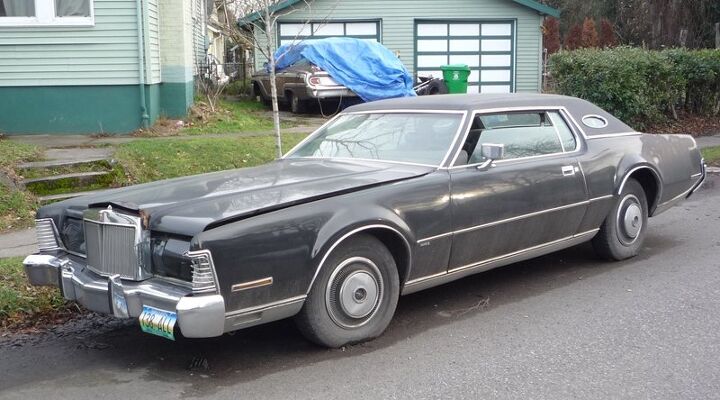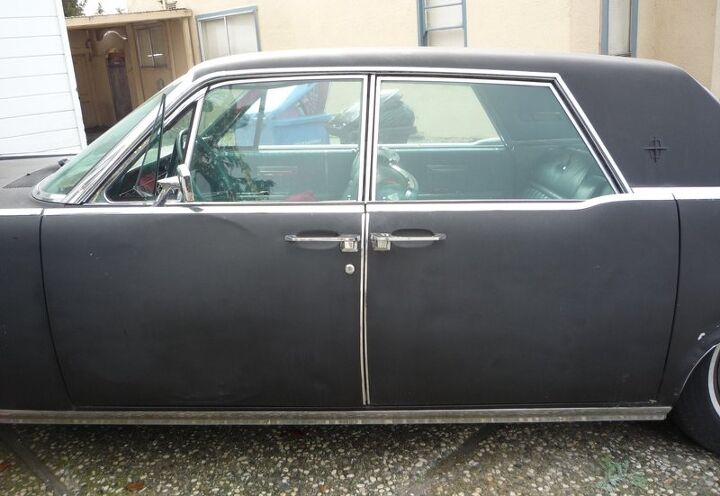#MarkIII
Rare Rides Icons: The Lincoln Mark Series Cars, Feeling Continental (Part X)
We resume our tale of the Mark series cars today, during a period of recovery for Lincoln and their Continental lineup. The introduction of all-new unibody Lincolns in 1958 saw questionable over-the-top styling debut right at the start of a sharp recession. Most people didn't enjoy the looks of the new Mark III. Lincoln toned down the glitz for the '59 models, with better-integrated styling cues here, and less bulbous sheet metal there.
A new naming scheme arrived in 1959, Mark IV Continental, as Continental became a version of Mark. At the same time, Ford attempted to take the Continental upscale via the introduction of the more spacious (but not longer outside) Mark IV Continental Town Car and Limousine.
With a better US economy, Lincoln improved its sales figures considerably in 1959. However, the portion of those sales that were Continental models dropped by almost 12 percent. However, given all the millions Ford poured into its new Lincoln models it was not prepared to ditch them after just two years. There was a third year of the unibody Mark, with the highest series number yet: V.
Rare Rides Icons: The Lincoln Mark Series Cars, Feeling Continental (Part IX)
Our Lincoln Mark Series coverage continues today, and we pick up at the end of 1958. After Ford dumped many millions into the Continental Division and quickly shut it down, the company then spent a lot more money to develop an all-new unibody platform for Lincoln’s usage. In an attempt to woo customers away from Cadillac, the new Lincolns for 1958 wore some of the most shocking styling ever to come from Detroit.
All three of Lincoln’s new “models” were really just trim levels of the same car. Said models included Capri, Premier, and the top-tier Continental Mark III, which was not a Continental except in trim badges. At least it had a Breezeway window! At the 1958 launch of Lincoln’s new unibody line there was a steep recession across the globe, as lots of Americans decided they didn’t actually need a new car every year or two. Nevertheless, the Continental Mark III made up 62 percent of Lincoln’s sales that year. Lincoln veered off on a revised course in 1959, hoping to improve its lot with some more “new” models.
Rare Rides Icons: The Lincoln Mark Series Cars, Feeling Continental (Part VIII)
With the Continental Division dead, a cost-weary and (newly) publicly traded Ford Motor Company headed into the 1958 model year determined to unveil a solid luxury car showing against its primary rival, Cadillac. However, the “Continental Mark III by Lincoln” was a Continental in name only: It wore the same metal and was produced at the same new factory, Wixom Assembly, as the rest of the Lincoln models (Capri, Premiere) that year.
Brass at Ford hoped the Continental name on the Mark III would make customers believe it was something special, like the Cadillac Eldorado with which it competed. As mentioned last time, aside from its Continental name, the Mark III for 1958 used One Simple Trick to lure buyers into its leather seats: a Breezeway window. First up today, pricing problems.
Rare Rides Icons: The Lincoln Mark Series Cars, Feeling Continental (Part VII)
The Continental Division was in a very difficult place when it designed an all-new Mark III as the (sedan only) replacement for the slow-selling and super expensive Continental Mark II coupe. As we learned last time, shortly after the Mark II went on sale the Continental Division was already on its last legs. It continued to lose money hand over foot after Ford’s huge initial investment and was doomed to a quick closure.
And so it was the 1956 and 1957 Mark IIs became the only Continental Division product and the only Marks that were hand-assembled in a factory-built, especially for Continental. After Continental’s closure, Ford’s new VP of passenger vehicles Lewis Crusoe quickly dismantled the division and integrated its employees into Lincoln. The Continental factory became the Edsel factory, and the three extant Mark III prototypes became a burden.
Curbside Classic: 1946 Lincoln Continental – The Most Imitated American Car Ever
This car is a jaw-dropper, a true classic, and a lucky find that rivals the CC logomobile, but it’s misnamed. By all rights, it should be the Edsel American. It was Edsel Ford’s fine taste and encouragement that made the original version of this trend-setting car happen, and in the process created a car that set the template that every American personal luxury coupe/convertible has been trying to measure up to ever since. An aggressive face on a very long hood, a close-coupled body, a short rear deck, and dripping with the aura of exclusivity and sex: a timeless formula. All too few of the endless imitators got the ingredients right, or even close, as our recent Cougar CC so painfully showed. But that didn’t stopped them from trying, just like I never stopped looking for this Continental after I first saw it almost two years ago. It was well worth the effort.
Curbside Classic: 1973 Continental Mark IV
Ironically, the Continental Mark IV is the most “American” car ever. It’s the ultimate counterpart to that most continental/ European car ever, the VW Rabbit/Golf Mk I that appeared about the same time. The Golf was a brilliant triumph of modern design: space efficiency, economy, light weight, visibility, sparkling performance and handling. And in Europe, the Golf became known as the “classless” car; one that didn’t make a statement about its owner. The Mark? Well, take all those qualities, turn them upside down, inside out, and then toss them out the window. Americans have long had ambivalence about “modern” anyway; it hinted at socialistic and intellectual influences that didn’t always sit so well. The most modern American car ever was the Corvair, and look how that turned out. Even the Kennedy Lincolns were a touch too modern. America was ripe for the first true post-modern car, and Ford was the obvious company to make it.






















Recent Comments